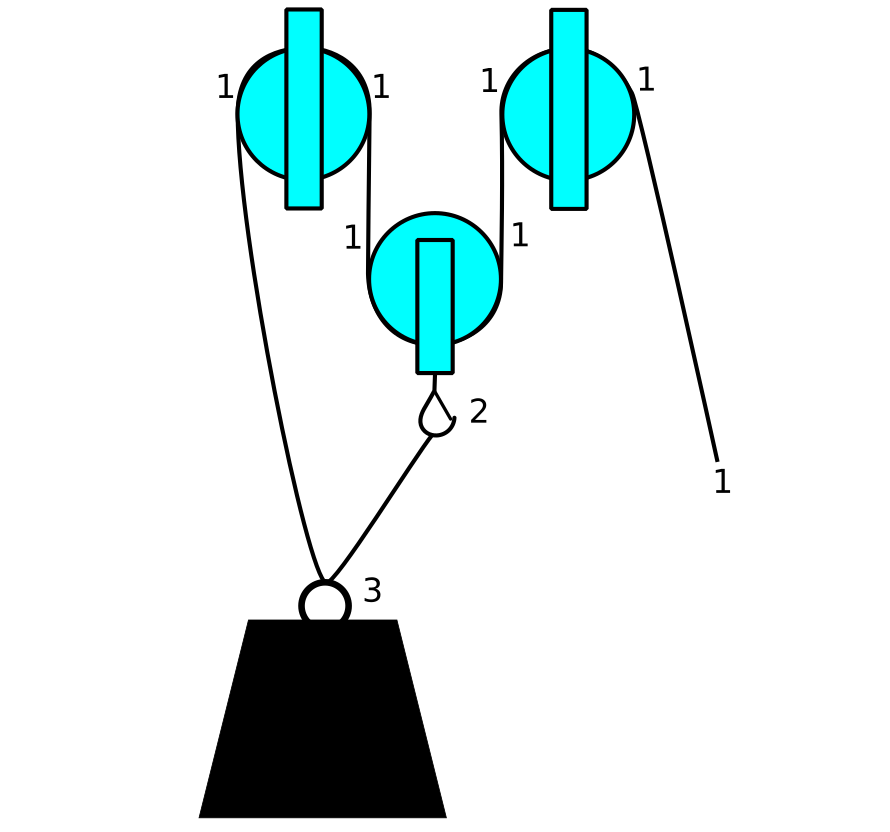
Pulley Systems
Pulleys are a simple and manoeuvrable method of transporting huge goods. They are simple to move and set up when they are needed, but they do require a stable place to hang.
Components:
- pulleys
- ropes
- weight
- support
Working Principle:
Pulleys, like levers, use mechanical advantage to raise loads. Pulleys are wheel-shaped with a groove in the centre that allows a cord to pass through. To increase the amount of weight that can be lifted, they can be utilised by hand or coupled with a motorised winch.
Mechanical advantage
The mechanical advantage is a measure of the force amplification given by the use of a mechanical tool or system. In other words it is the ratio of the force produced by a machine relative to the force applied to it, used in assessing the performance of a machine.
Tensions in a Pulley
In a pulley the tension on both sides of the rope is the same (T2). The tension T1 applied to the string that attaches the pulley to the ceiling in the picture below has to be the double of T2 (negleting the weigh of the pulley).
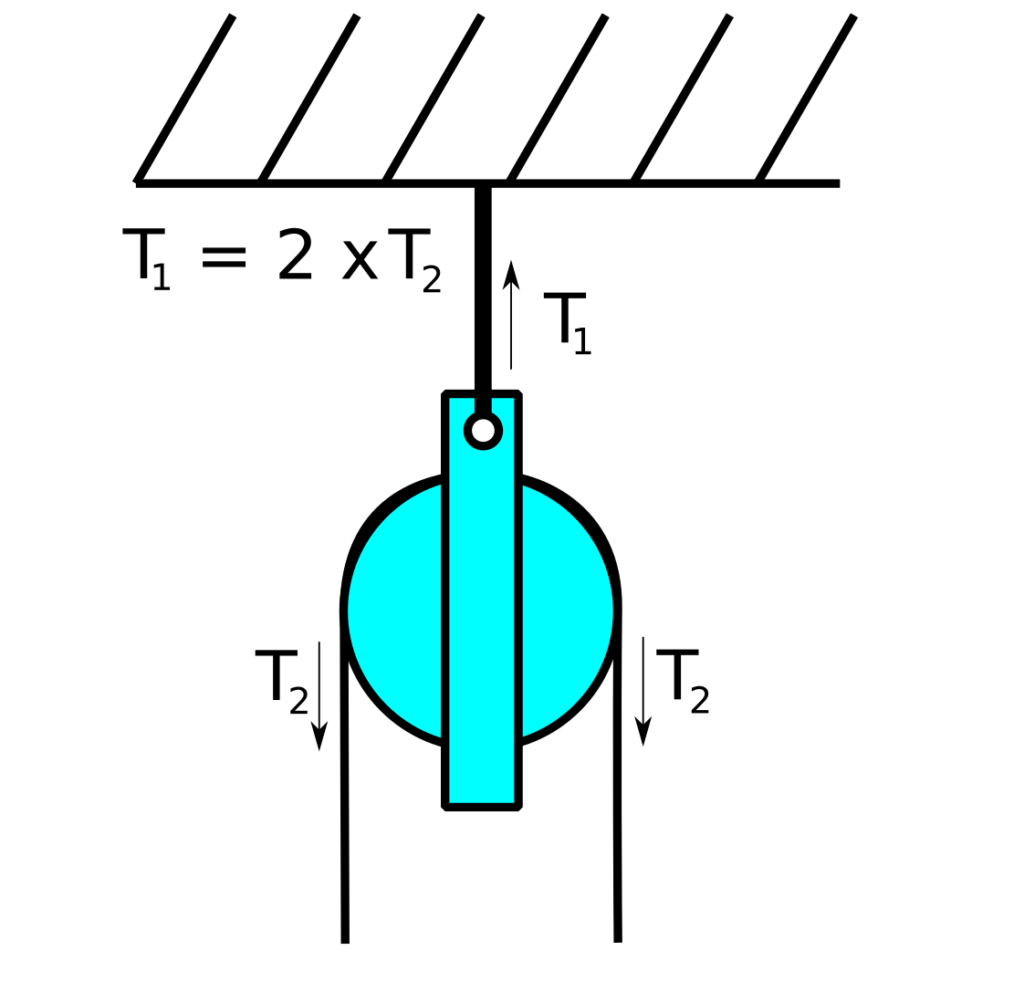
Chaging direction
Pulling down is easier than pushing up and, to achieve that, you can use a single pulley to reverse the direction of force. Cranes, lifting a bucket from a well, hoisting a flag, and changing window curtains all use single pulley systems.
One pulley is referred to as having a mechanical advantage of one (MA = 1) even though there is no actual mechanical advantage. It’s purpose is to change direction only.
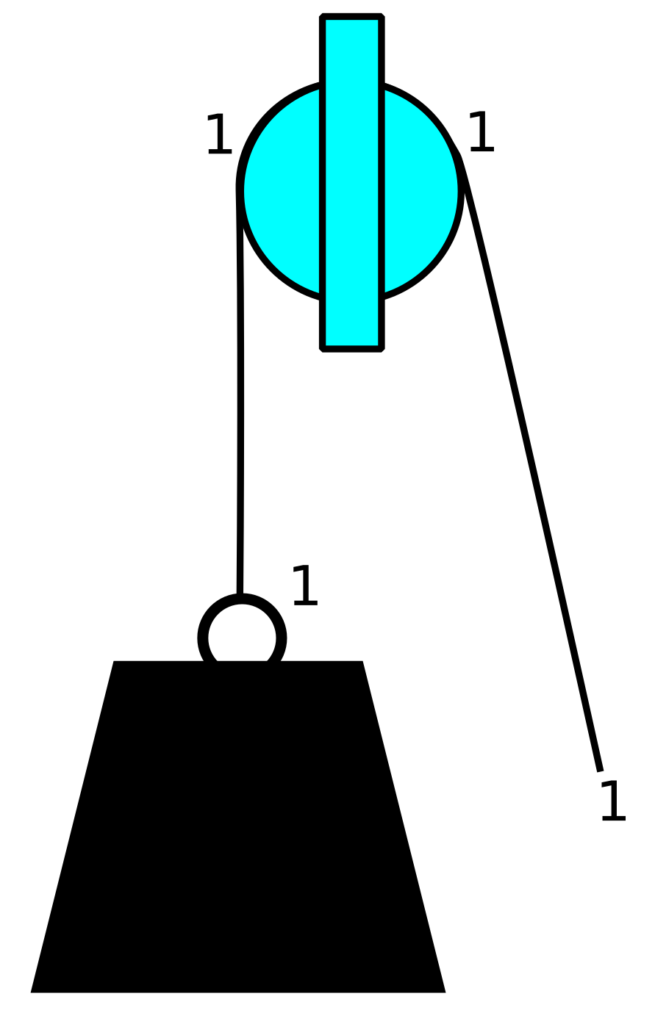
Because the same amount of force is required, one pulley does not provide an actual mechanical advantage.
Simple Pulley System
If more pulleys are added, however, a mechanical advantage is generated. When you combine two pulleys, you just need half the force to lift. A block and tackle is a technique for lifting large, awkwardly shaped things, such as furniture. The load that the block and tackle can lift is increased by adding more wheels. With a movable pulley the mechanical advantage is two (MA = 2).
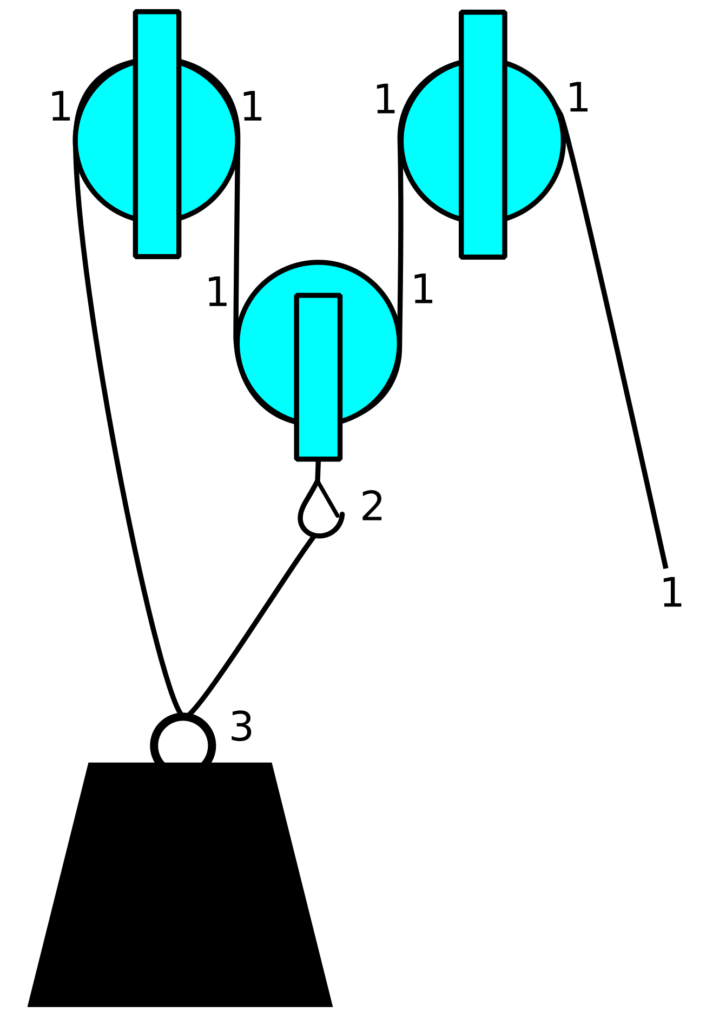
Compound Pulley System
When many simple pulley systems are piled together, a compound pulley system is formed. In the illustration, two systems — simple and compound — with the same MA = 8 are depicted. The mechanical advantages of all integrated simple systems are doubled in a compound pulley system. Their mechanical advantage, in other words, is characterised as
MA = 2n
The number of moving pulleys is denoted by the letter n.
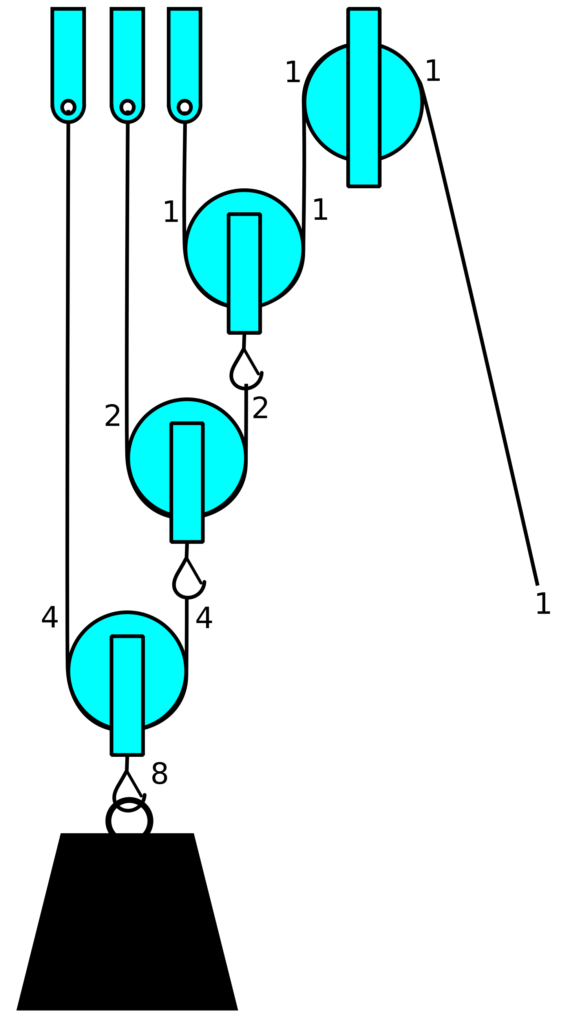
The total MA of three 2:1 systems combined, as illustrated in our example, is 8:1. When a simple pulley system is compared to a compound one with the same MA, we can see that the compound system has less pulleys. Because of the added friction, a simple system is less efficient.
Instructions:
- Try lifting the same weight using the different pulley systems available
- Can you calculate the mechanical advantage for each one?
Links:
Why Snatch Blocks are AWESOME (How Pulleys Work) – Smarter Every Day 228
Mechanical Engineering: Particle Equilibrium (11 of 19) Why are Pulleys a Mechanical Advantage?
How to Calculate First, Second and Third Pulley Systems
System of Pulleys — Mechanical Advantage Calculator • Mechanics • Online Unit Converters